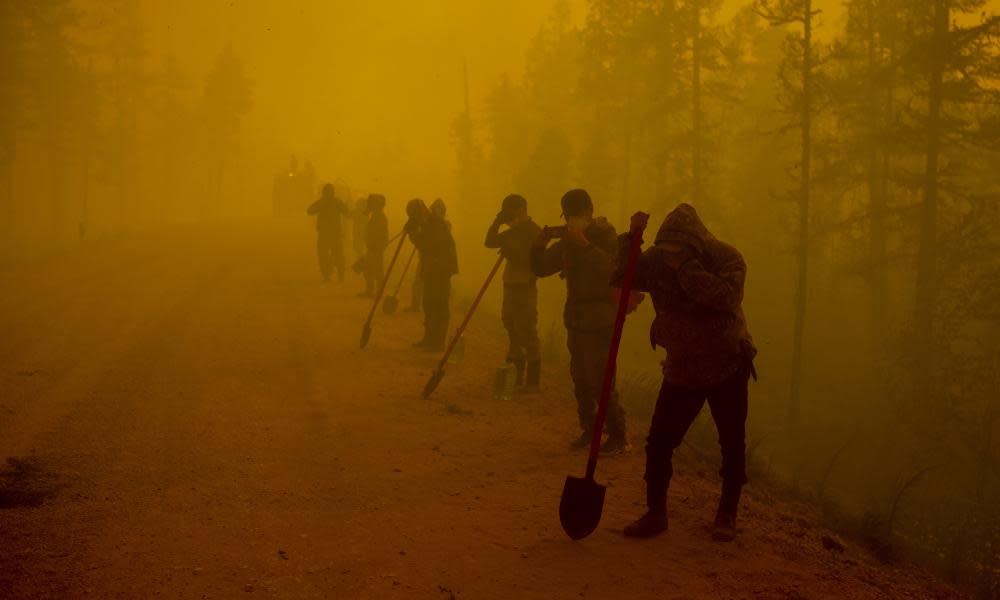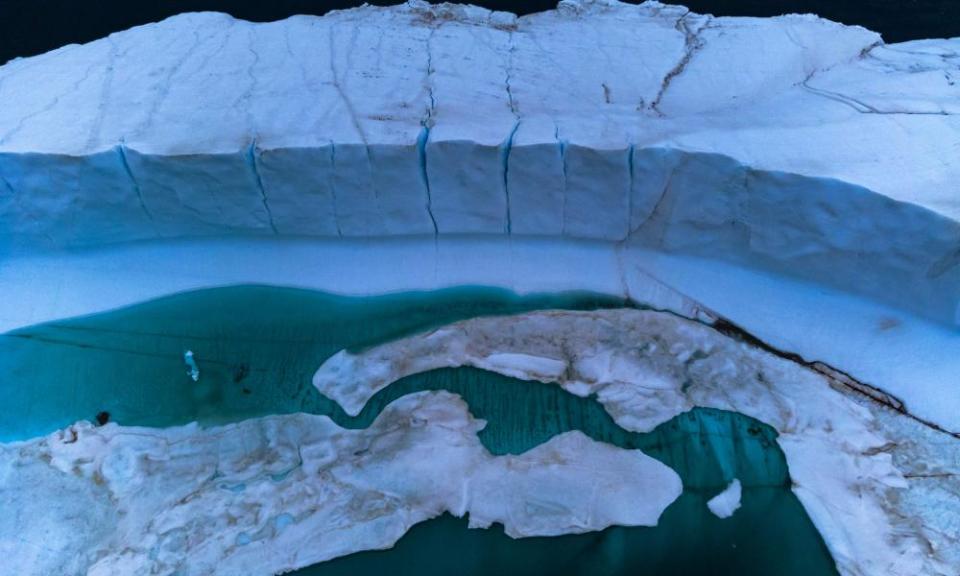Why scientists are using the word scary over the climate crisis

Back in the 1980s, when climate research began to really take off, scientists were desperate to retain their credibility as they unravelled the potentially dire consequences of the “new” phenomenon of global warming. Most journalists tiptoed round this topic because no one wanted to lose their reputation by scaremongering. But as the science steadily became overwhelming researchers pushed their conclusions in the face of policymakers.
More and more scientists are now admitting publicly that they are scared by the recent climate extremes, such as the floods in Pakistan and west Africa, the droughts and heatwaves in Europe and east Africa, and the rampant ice melt at the poles.
That is not because an increase in extremes was not predicted. It was always high on the list of concerns alongside longer-term issues such as sea level rise. It is the suddenness and ferocity of recent events that is alarming researchers, combined with the ill-defined threat of tipping points, by which aspects of heating would become unstoppable.
Climate computer models have typically projected a fairly consistent but smooth rise in temperatures. But recently the climate seems to have gone haywire.

The heat phenomenon in the Canadian town of Lytton, for instance, produced a “dome” of trapped heat that cranked up the temperature to 49.6C. Wildfires raged and the town was razed. I broke the news to one of the Royal Society’s leading members, Prof Sir Brian Hoskins, but at first he did not believe me. Then he said: “Oh, my god, that’s really scary.”
The high temperature itself was shocking enough but amazingly it topped the previous record by five degrees, when records are normally beaten by just a few tenths of a degree. Hoskins told me later: “Climate models have generally projected very smooth changes, whereas the real world is suffering rapid regional changes. The rise in globally averaged temperature is a useful metric of how far climate change has got, but it doesn’t bring home the message of the likely local and regional impact.
“So, land warms more than oceans; higher latitudes warm more than low latitudes, especially in winter; the warming is non-uniform which means weather changes; air that is 6C warmer can hold 50% more water and generally does, so rain storms are that much stronger; sea level rise means storm surges are more devastating.
“I have been surprised and alarmed at the record temperatures and floods we have seen in many places around the world – with only 1.1C warming [globally].”

In July this year the UK had its first 40C day. Two years previously, researchers said the chances of that happening this decade were 100 to 1. The small print of that day revealed a truly extraordinary high temperature at Bramham, Yorkshire, breaking the previous record by 6.5C.
Prof Hannah Cloke, from Reading University, said: “This sort of thing is really scary. It’s just one statistic amongst an avalanche of extreme weather events that used to be known as ‘natural disasters’.”
Related: Extremes of 40C above normal: what’s causing ‘extraordinary’ heating in polar regions?
But it is the threat of unstoppable long-term change that most worries Prof Dame Jane Francis, director of the British Antarctic Survey. She has witnessed temperatures in the Antarctic of 40C above the seasonal norm, and 30C above in the Arctic.
Francis was most alarmed by a recent report warning that if the 1.5C threshold were exceeded, seen by most scientists as almost inevitable, it could trigger multiple climate tipping points – abrupt, irreversible and with dangerous impacts.
She said: “It’s really scary. It seems some of [these trends] are already under way.” She said she feared for the permafrost, the Greenland ice sheet, the Arctic sea ice, and Antarctica’s Thwaites glacier and western ice sheet.
“These multiple effects will affect the whole planet, as well as the local inhabitants,” she says. As a geologist rather than a climate modeller she looks back in time for clues about the Earth as it is at present, with its inflated CO2 level, which peaked at about 420 parts per million in May.
“The last time the planet saw 400ppm CO2 was three to four million years ago during the Pliocene when global sea levels were 10-20 metres higher and temperatures 2-3C higher. Those changes happened over millions of years. Now it feels like we are forcing these changes on our planet in far shorter time spans.”

For most people the crisis is manifesting itself in weather extremes. North America and Europe suffered their own self-inflicted climate wounds with searing heat records and wildfires. In California record rainfall failed to quench the desiccating effects of years of drought. Florida, whose Republican leaders have voted against climate change policies, begged Washington for cash after Hurricane Ian tore across the state.
There has been heavy loss of life from floods in Nigeria, and summer in Europe brought relentless heat. Motorways in France closed as forest fires raged. Wildfires also ravaged Spain, Portugal and Greece. Northern Italy could lose up to half its agricultural output due to a drought that dried up sections of the nation’s longest river, the Po.
And that is just with 1.1C or 1.2C of warming. Before long we will crash through the 1.5C threshold – and unless much more radical action is taken we are heading for between 2C and 3C warming. Scientists are urging politicians not to find out what global warming of 2C above pre-industrial levels feels like.
Scientists are also frustrated by the limitations of their knowledge. Prof Richard Allan, a lead author for the Intergovernmental Panel on Climate Change (IPCC), said: “Climate change is only going to get worse. A global rise of 1.5C will be much worse than now. But when you get down to local scales we’re getting extremes than the models can’t capture. That includes local-scale droughts and floods. It’s these events that are difficult to picture.”
So the scientists are in a bind. They are sure things will get worse. They don’t know exactly when, and by how much. They know that if they appear to be campaigning, that could lose credibility. But increasing numbers of them are so alarmed they are trying to strike different notes to jolt politicians and the public.
Another former IPCC lead author, Prof Piers Forster, from the University of Leeds, said: “I have tried to change the way I communicate to make it more personal and emotional. Extreme impacts are bad now and going to get a whole lot worse. But then you need to give people hope, and ourselves, as scientists hope. We can slow the rate of warming immediately if we act now.”

 Yahoo News
Yahoo News 
